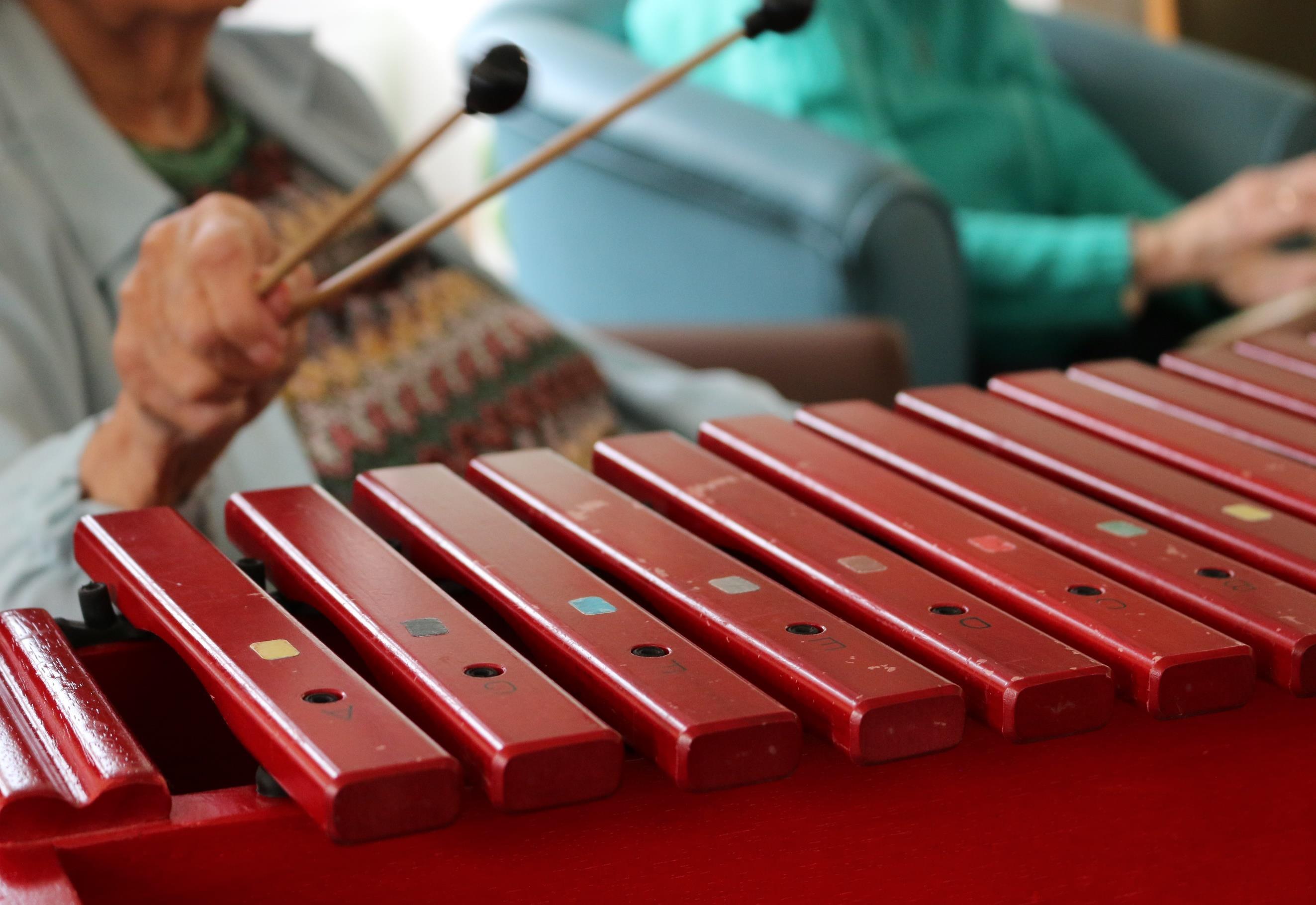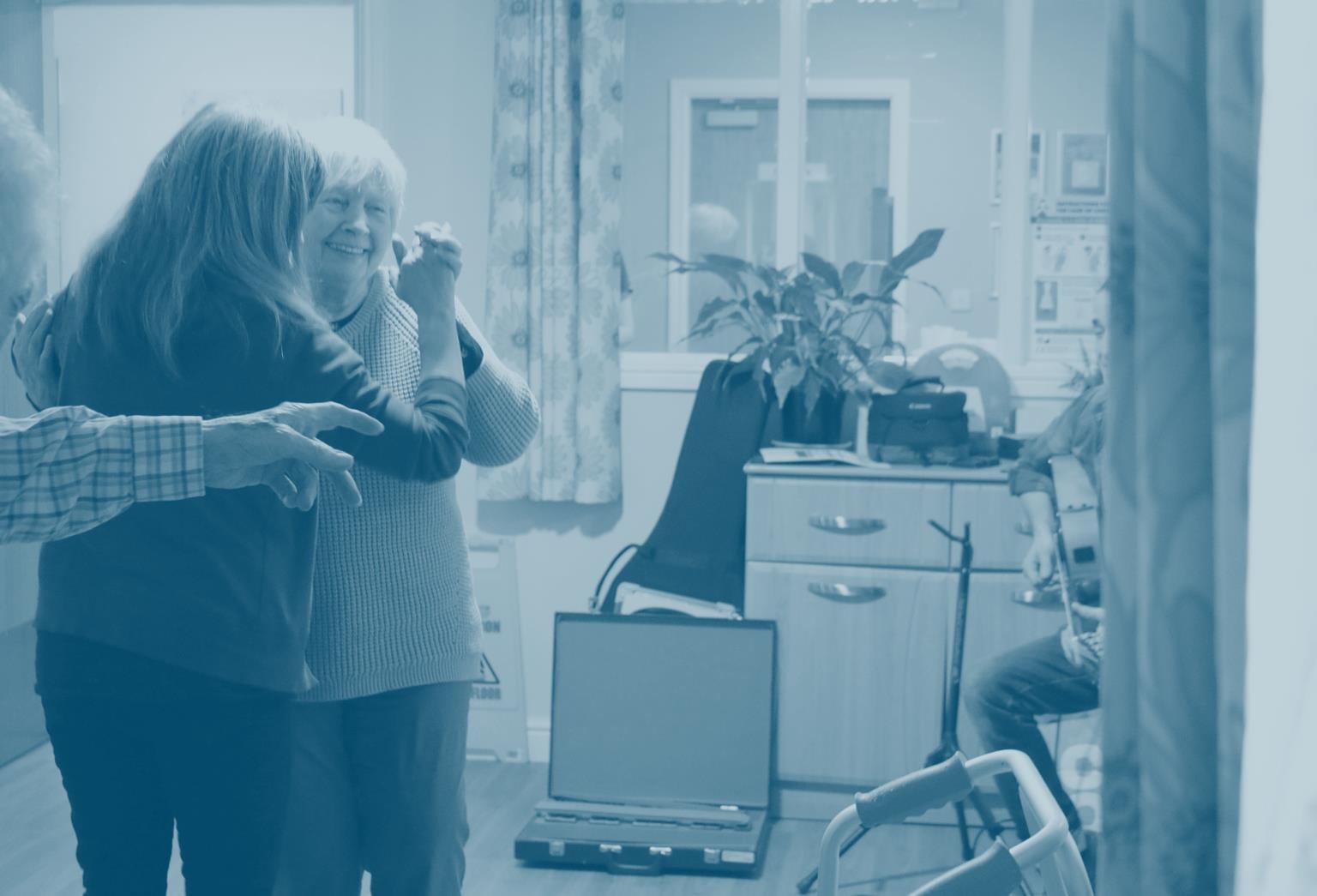

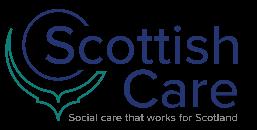






Phase 1 report by OutPost Arts | 2025
CONTENTS:
About Partners
Aims & Objectives
Foreword – Project Lead
Research & Engagement
Pilot Activities
Evaluation Process
Key Outcomes
Reflections & Opportunities
Key Recommendations
Next Steps
Acknowledgements Page 3 Page 4 Page 5 Page 7 Page 10 Page 16 Page 17 Page 19 Page 20 Page 22 Page 27
Page | 2
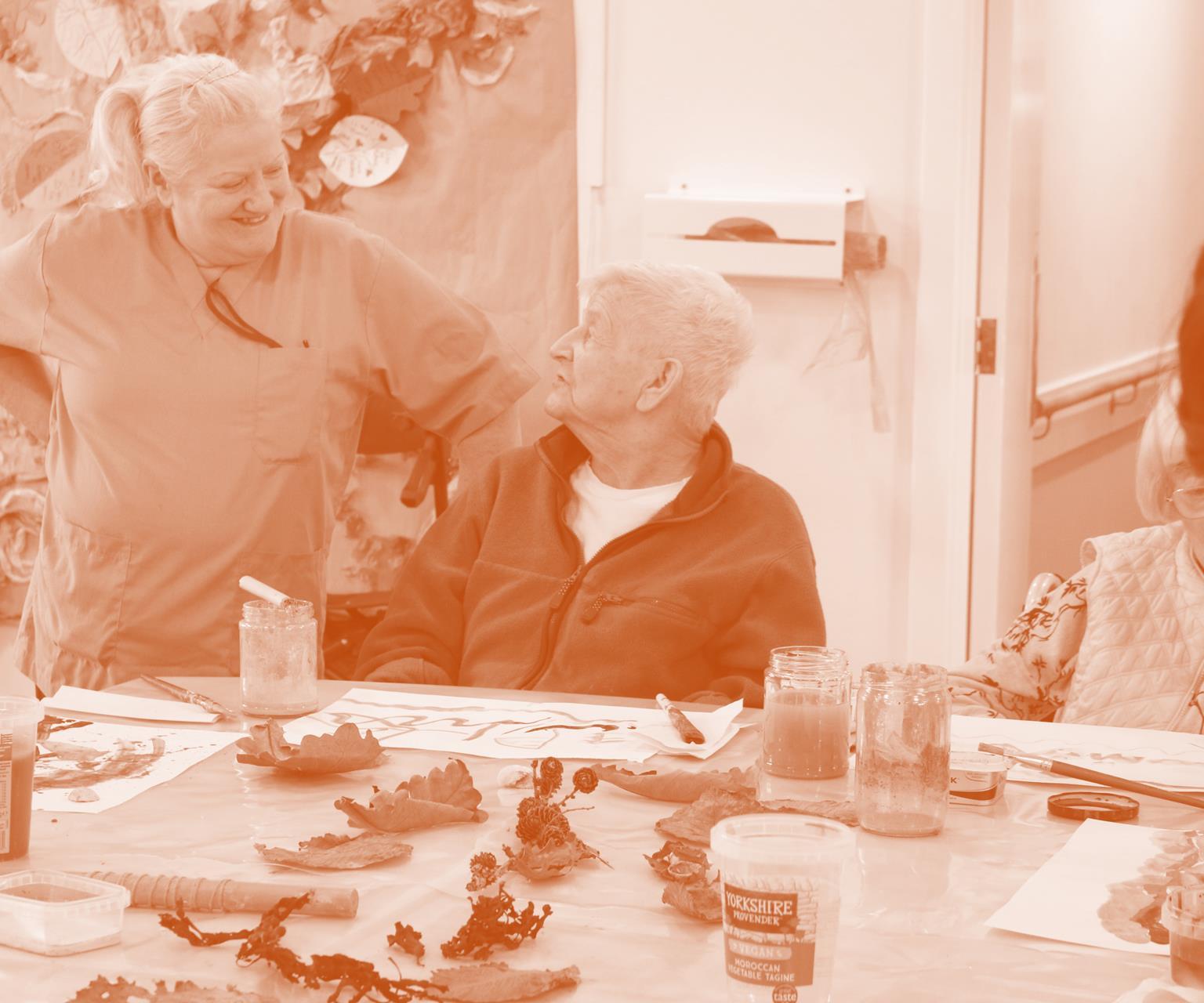
Scottish Care
Scottish Care is a membership organisation and the representative body for independent social care services in Scotland.
Scottish Care works closely with partner organisations at strategic and practice levels on behalf of the membership to ensure that they can influence and be a part of decision-making processes. These include the Scottish Government, Care Inspectorate, Scottish Social Service Council and COSLA.
Scottish Care represents around 350 organisations, which totals almost 900 individual services, delivering residential care, nursing care, day care, care at home and housing support services.
Scottish Care members deliver a wide range of registered services for older people and those with long term conditions, learning disabilities, physical disabilities, dementia or mental health problems. Web: scottishcare.org
Based in Dumfries & Galloway, OutPost Arts is a progressive arts organisation with three core aims - to positively affect wellbeing, education and community resilience by connecting individuals and communities with art, culture, and creativity.
Following on from the pandemic, OutPost Arts’ focus has been the careful development and coordination of the wide reaching and innovative 'DG Creative Wellbeing’ project, which has been co-designed with a range of cross-sector partners including NHS D&G. The overarching aim of the DG Creative Wellbeing project is to increase access to creativity, art and culture for people and communities across D&G, focused on enhancing health and wellbeing for all.
The project includes a community programme supporting adults and young people, a Creative Wellbeing Network and an Arts in Healthcare strand –supporting patients, NHS staff and hospital visitors.
Web: dgcreativewellbeing.co.uk | outpostarts.co.uk
In August 2024, OPA agreed to coordinate a Creative Wellbeingfocused pilot project across x3 selected Dumfries & Galloway care homes.
The project’s key aims were:
• To enhance wellbeing for staff
• To enhance wellbeing for residents
• To improve relationships between staff and residents
• To increase levels of personal creativity for staff
• To explore pathways to increase sense of empowerment & ownership for stakeholders
• To enhance care home spaces – improving working environments for staff and providing stimulation for residents
• To identify longer-term aims
• To evaluate the success of Phase 1 and the potential for Phase 2

Foreword
Creativity is a way of being—a means to explore, express, and connect. Yet in care settings, where routines often dominate and resources are stretched thin, making space for creativity can feel like a luxury rather than a necessity. The Care Project set out to challenge that perception, driven by the belief that creativity is for everyone, always. Over the past few months, I’ve seen firsthand how creativity can spark curiosity and joy in residents, even in small moments of participation. I’ve also seen how it creates opportunities for care staff to reconnect - with their own creativity, their colleagues, and the residents they care for. These moments transform everyday care routines into important and meaningful shared experiences.
This pilot phase has been a huge learning curve. From understanding what resonates most with residents and staff to adapting sessions to meet diverse needs, we’ve gained insights into the unique challenges and opportunities of fostering creativity in care settings. Above all, it's been a reminder that creativity doesn’t diminish with age or circumstance. It’s been such a joy to lead this pilot phase.
I hope this report inspires more conversations about the role of creativity in care and how we might embed its transformative power into everyday life…
Phoebe Watt
The Care Project Lead Officer
Page | 5
Page | 5

Image: Lucy Lee developed a range of accessible, natural art materials for residents with poor grip.

At the heart of the Care Project’s pilot phase was the desire to listen, learn and connect. We selected x3 care homes across the region which varied in size/capacity, providing variables when evaluating impact.
Allanbank, Dumfries – 67 beds, 19 daytime staff Fleet Valley, Gatehouse of Fleet – 43 beds, 9 daytime staff Munches Park, Dalbeattie – 29 beds, 7 daytime staff
Phase 1 focused on understanding the unique creative potential within each care home, exploring how we could foster joy and connection through creativity. This began with a focus on understanding how creativity is being embraced in care settings across the UK and beyond.
Rather than attempting to prove that creativity enhances wellbeing –something already well-documented - we aimed to put that knowledge into action within real-world care environments and explore its impact. Led by associate artist Julie Stephen, the engagement phase invited residents and staff in our partner care homes to share their stories and interests.
The Tree of Life activity became a central focus of this work. Through this collaborative artwork, participants added hand-decorated leaves to an autumnal tree they had created with mixed media that represented memories, passions, and creative interests. Each tree grew into a vibrant display of individuality and shared interests, now proudly displayed in their care homes. Blank leaves were left behind, ensuring the trees could keep growing as new ideas emerged.

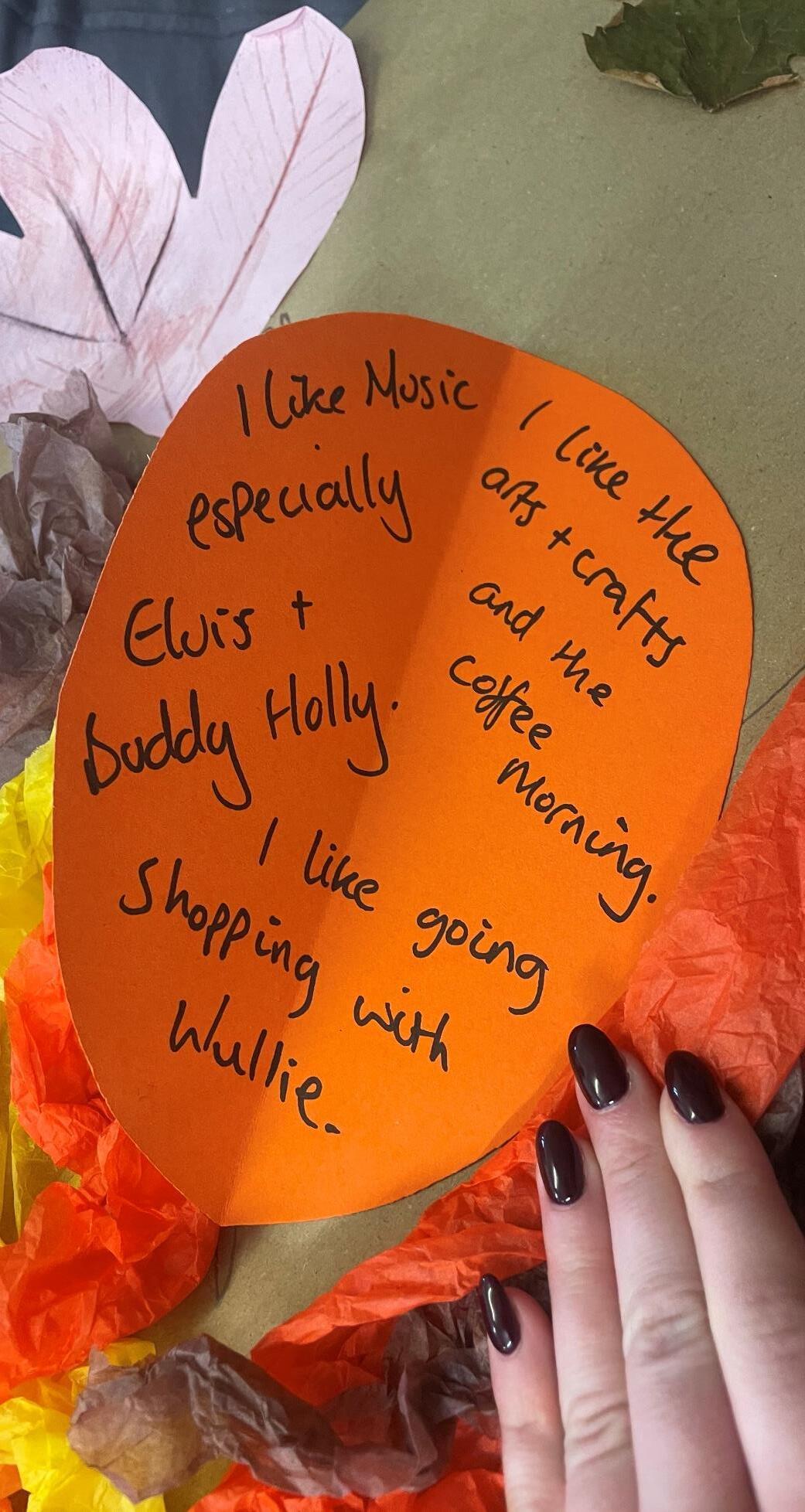
Through these sessions, several themes emerged across all three homes:
• A strong love for nature, animals, and the outdoors
• Music, painting, and crafts as recurring sources of joy
• Textiles, including knitting, crochet, and sewing, as preferred creative outlets
The Tree of Life activity became a conversation starter, unlocking memories and ways to relate to each other. Through this process, we began to see how creativity could act as a bridge between the past and the present, between residents and staff, and between individuals and their community.
During these sessions, residents often reflected on past joys with comments like, “I used to do that,” “Not anymore,” or “I can’t do that now.” These remarks highlighted the sense of loss that often accompanies ageing.
Recognising the challenges posed by dementia, arthritis, mobility limitations and other changes that come with age, it became essential for us to find creative ways to rekindle those sources of happiness in ways that felt accessible and meaningful for all. .
Julie Stephen is a regional artist with a varied skill set, from writing and illustrating children’s books, to facilitating printing, painting and drawing workshops for a diverse range of people across Dumfries & Galloway.

“All the staff and residents were engaged in the different activities that were set for them, and it was lovely to be working as a group…”
- Artist Julie Stephen, Tree of Life session, Fleet Valley

Building on the insights from Phase 1, we worked with artists to deliver creative pilot activities tailored to each care home. These activities focused on three main themes—nature, music, and visual arts—and were designed to meet the interests and needs of each care home. The aim was to make creative participation accessible for all, with careful facilitation and bespoke art materials allowing every resident to participate meaningfully.
Local Artist Lucy Lee led mark-making workshops inspired by nature.
Residents and staff used handmade materials like oversized crayons and willow charcoal to create coastal-themed artwork, accompanied by a soundtrack of seaside sounds.
These sessions sparked memories and stories, as the team chatted with residents about seaside visits and their connections with the coast.
Lucy Lee is the co-founder of ‘The Old Mill Arts’ – an organisation that focuses on making and using natural materials and pigments. Lucy is an experienced mixedmedia artist with a background in gardening and foraging, bringing unique skills and knowledge to her art-making.

“I most enjoyed the joining in and socialising, it de-stressed me and relaxed me. I enjoyed the company. I have loved it today mixing with others.” – Munches resident, Lucy Lee session

“A resident said it helped her be sociable and relax as her Parkinsons can be really restrictive in what she can participate in. She enjoyed the opportunity to share stories and memories about her family…”
- Artist Lucy Lee
Led by Heather and Stuart of Paragon Music, these interactive sessions brought residents and staff together through vocal warmups, dancing, and playing instruments.
Paragon liaised with The Care Project Lead Officer, selecting appropriately accessible instruments to allow residents with poor mobility and/or hand grip to participate.
These sessions inspired connection, laughter, and sparked memories of music, highlighting its unique power to bring people closer.
Paragon are a music and arts organisation dedicated to bringing people together and transform lives through music and dance.
Paragon’s work is guided by two key principles - equality and inclusion. They are dedicated to inspiring young people and adults to create new music and dance.
Paragon’s team coordinate fun, vibrant and accessible –workshops that promote positive self-image, teamwork, communication and learning.
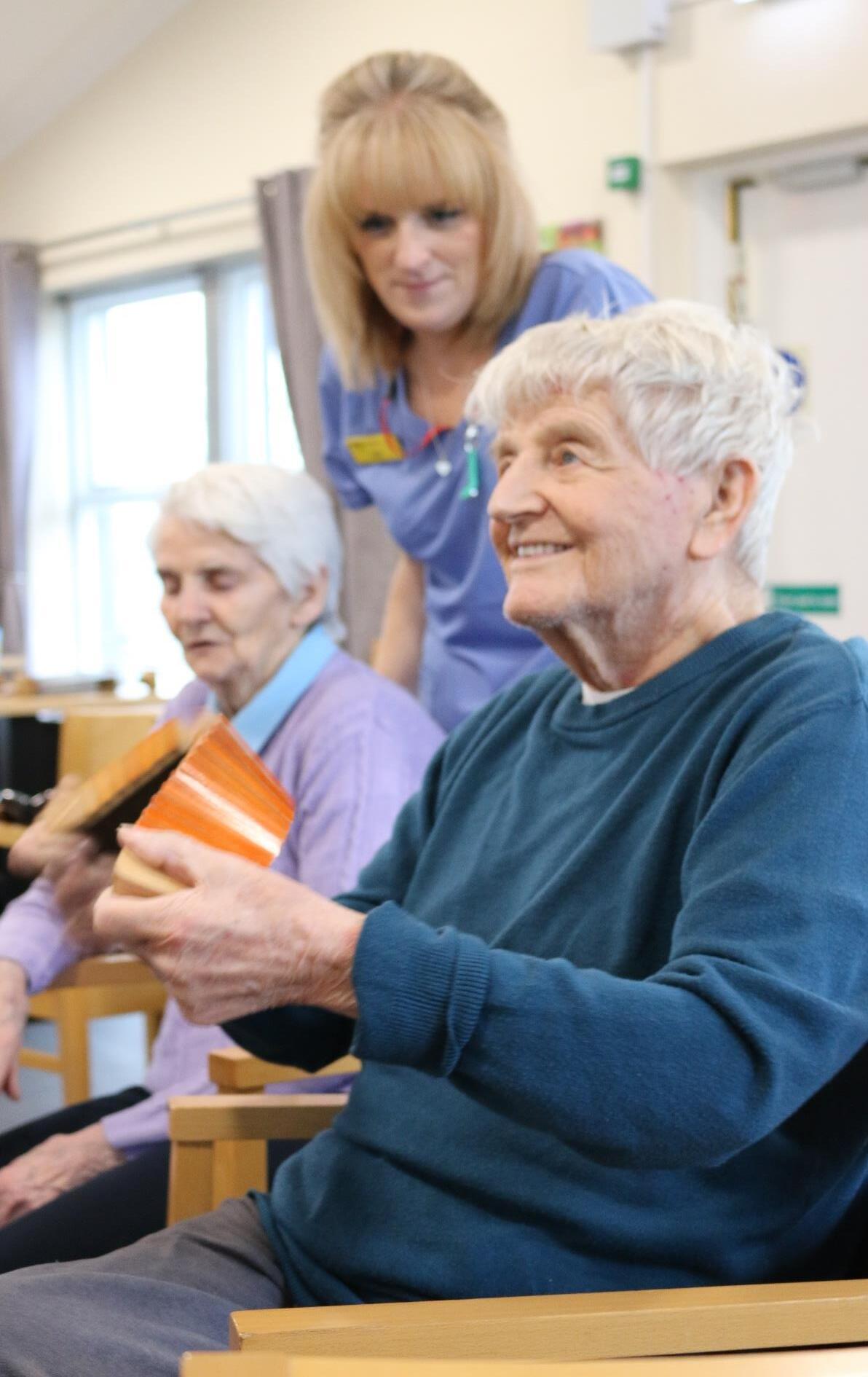

“I loved watching residents have a great time and joining in. This session brought us all together.”
– Fleet Valley Staff, Paragon session

“I found my voice and learned I'd try new things.”
- Munches Park Resident, Paragon session
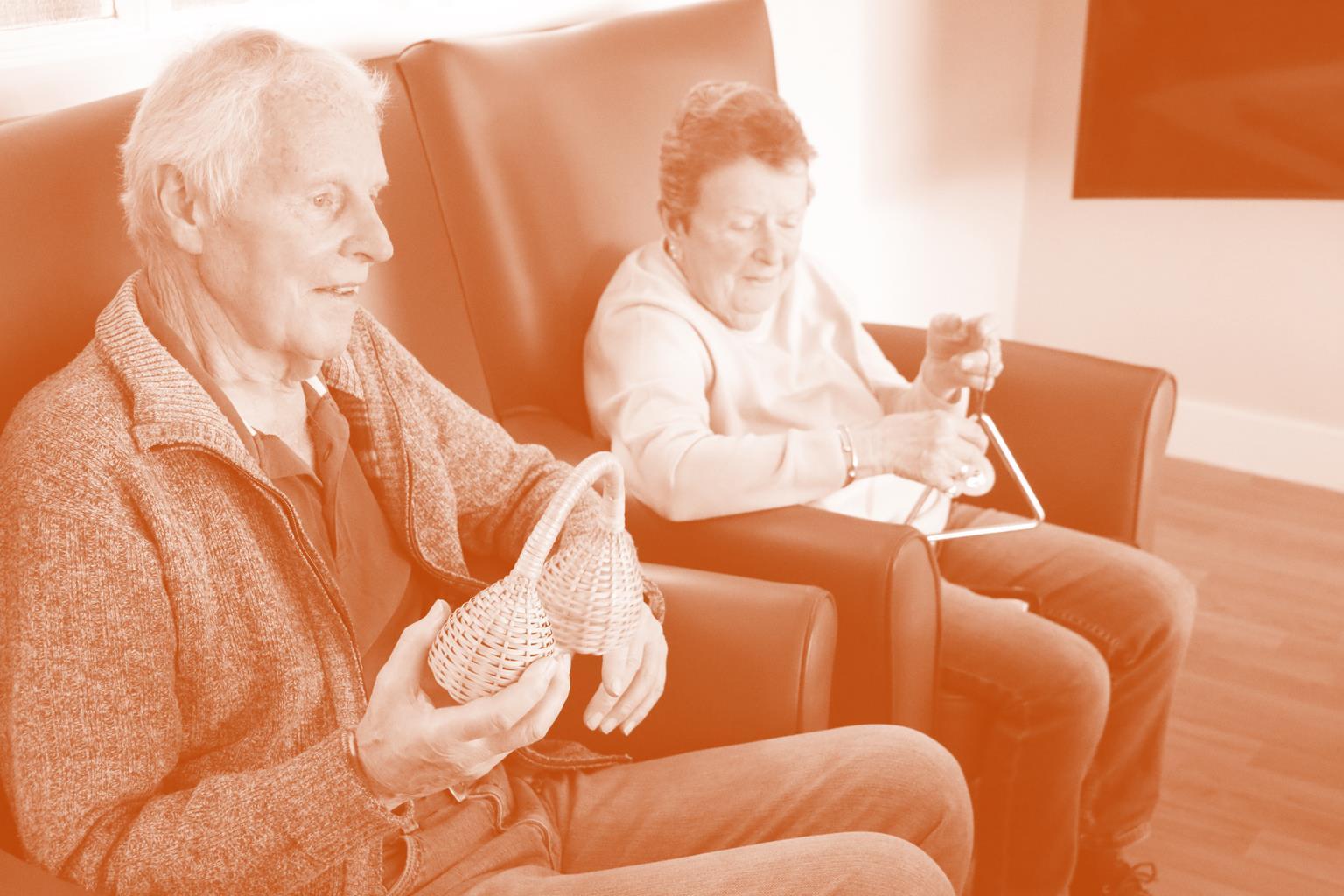
From the beginning of the project, we were faced with the challenge of determining the most effective way to evaluate, given that many of the residents have dementia, hearing impairments, or other cognitive difficulties that hinder communication and may make it hard for them to understand the evaluation's purpose or articulate their experiences. To address this, lead artists also completed a reflection form after each workshop, which included a section to record their observations of participant engagement and provide feedback on how the workshop went, including any suggestions for improvement.
Both resident and staff participants were provided with standardised reflection forms, with the resident forms designed to be more accessible for those with cognitive difficulties or dementia. Additionally, as well as providing reflections on their own experience, staff were asked to provide their own observations of resident engagement as not all residents could fully express their experiences.
Throughout the activities, we also engaged in informal conversations with residents to gain further insights into their thoughts and experiences. This multifaceted approach enabled us to gather a comprehensive understanding of the project's impact. We also gathered quantitative data, recording how many staff and residents took part.
Engagement Figures:
• Tree of Life sessions: 31 residents & 9 staff
• Lucy Lee sessions: 29 residents & 10 staff
• Paragon sessions: 30 residents & 6 staff
Total Numbers – 100 resident attendances & 25 staff attendances
Positive Atmosphere:
Residents and staff described the sessions as uplifting and relaxing. Laughter, storytelling, and moments of connection were common throughout.
Strengthened Relationships:
Creative activities fostered deeper bonds between residents and staff. Staff noted how these sessions gave them fresh opportunities to interact with residents in a different and more personal way.
Memorable Moments:
Art workshops inspired storytelling, including one resident who also found painting helped reduce physical tremors caused by Parkinson’s. Music sessions brought more mobile residents to their feet, singing and dancing to familiar tunes.
Inclusive Creativity:
Bespoke materials and thoughtful facilitation enabled participants to engage at their own pace. Tools like handmade brushes and iPad music apps made activities more accessible and fun.

| 18


While two-hour sessions worked for some, many residents found them too long, particularly for physically or cognitively demanding activities. Future workshops could benefit from shorter durations or flexible, drop-in formats. Workshops lasting 1-1.5 hours would be more suitable.
Staff engagement varied across care homes with some leaving sessions midway, often due to workload. Greater involvement would enhance resident support and allow staff to experience the creative process themselves. Challenges like understaffing and workplace culture contributed to this.
Logistical issues, such as room changes or unclear activity schedules, occasionally disrupted workshops. Our primary communication was with care home management, but information was often not cascaded to care staff.
It may help to find other ways to communicate with care home staff, perhaps through visual reminders like posters throughout the homes. Involving staff in planning sessions would also allow them to feel ownership and commitment.
This pilot reinforced creativity’s unique ability to bridge gaps - between past and present, residents and staff, and individuals within a community. Moving forward, there is exciting potential to embed creativity more deeply into care home life.
Ideas include:
Long-Term Creative Projects: Murals, memory trails, or gallery walls could foster a lasting sense of ownership and pride.
Story-Driven Activities: Encouraging residents to share personal memories and stories as part of creative sessions can deepen emotional connections and enrich the creative process.
Daily Creative Integration: Establishing regular activities, rather than one-off workshops, can sustain the joy and connection that creativity brings. Page | 19
Page | 19

Pre-Project Evaluation: Assess care staff and management’s expectations, hopes, and concerns beforehand and compare outcomes post-project to refine future approaches. Clarify objectives with care home staff and stakeholders.
Shorter, Flexible Sessions: Design workshops with shorter durations or drop-in formats to accommodate varying energy levels. Music sessions could start with performances of familiar songs to ease participants into engagement.
Staff Participation: Encourage staff to remain present throughout sessions to support residents and to deepen their own creative experiences. Find ways to make participation more accessible for busy staff – better communication ahead of workshops may help them prepare for this. It may also benefit to assign 1–2 care staff per session to provide consistent support, rather than relying on open invitations, and perhaps include care staff, not just management, in initial project meetings to ensure clear understanding of objectives and encourage their active involvement.
Artist & Session Assistant Training: Provide pre-project training to increase awareness about working with residents with dementia and other diverse needs – this will increase session leaders/support assistants’ confidence within the care home environment.
Community Connections: Nurture creative relationships with organisations and communities local to the individual care homes; forming links between their creative programmes and relevant social, cultural, environmental and heritage opportunities.
Long-Term Integration: Explore opportunities for lasting creative elements like murals, memory trails, or gallery walls, and consider embedding creativity into daily care routines.
Explore Delivery Partnerships: Work in alliance with other creative organisations with shared aims to increase capacity and diversity the creative wellbeing offering.
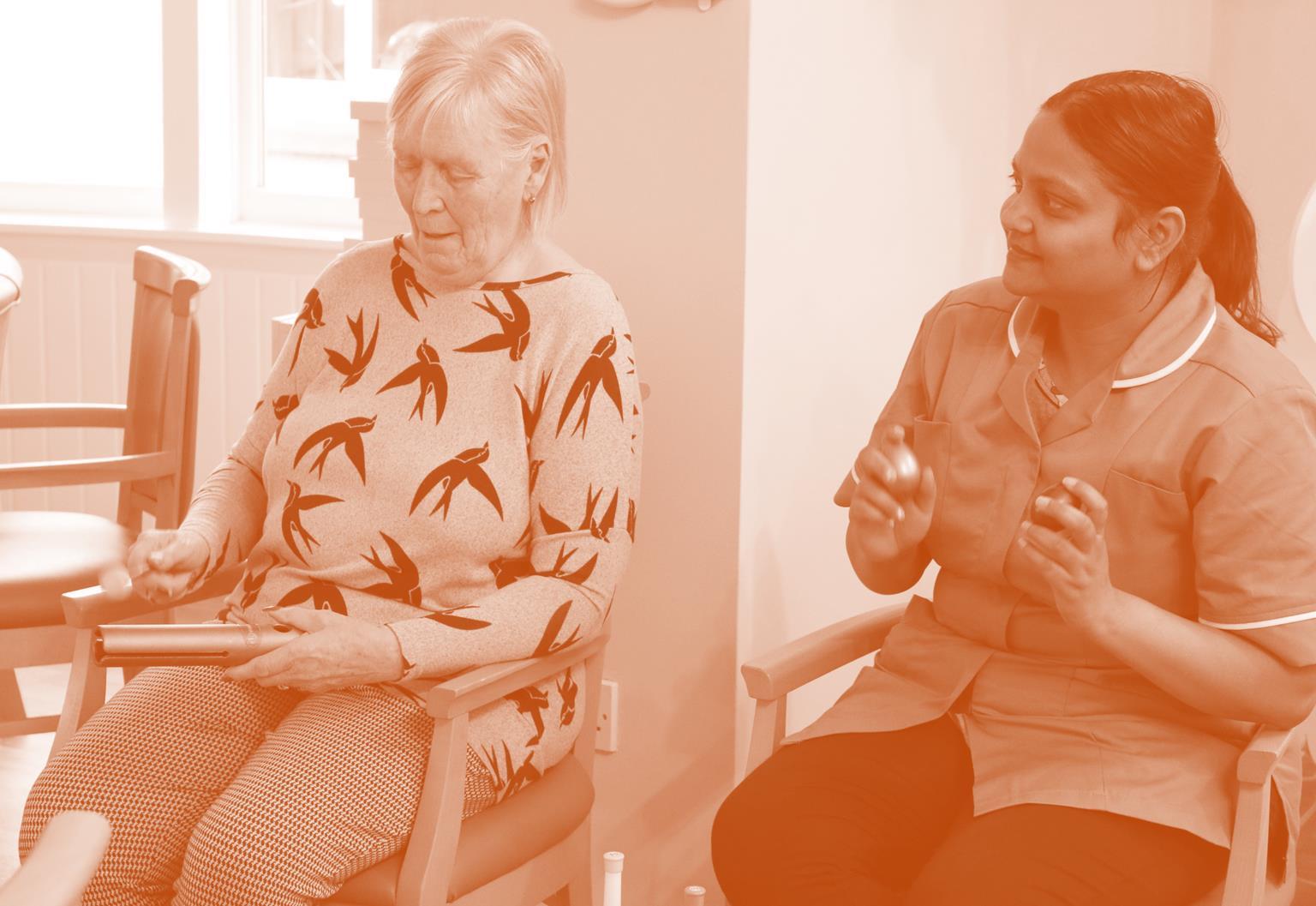
“It gave me chance to express myself.”
- Fleet Valley Staff, Paragon session
Short Term Objectives (1-2 years) – We will:
• Work with stakeholders to co-design and embed a diverse regular offering of creative wellbeing activities – initially across a handful of care homes. Activities will include arts and crafts, performance and music sessions (including listening sessions), and the development of internal and external, site-specific art installations that explore themes such as memories, storytelling, heritage and nature e.g. wall painting, planting, 3D work, stained glass.
• Develop platforms (both online and on-site) to share the work created by staff and residents.
• Pilot a modified version of OPA’s Art Journal Project to integrate creativity in small ways into care home resident’s lives and connect staff to regional creative and cultural opportunities.
• Create pathways for OPA’s community adult and youth graduates to creatively support care home residents and get involved in space enhancement projects. In Phase 1, x2 adult Peer Mentors supported Lucy Lee’s sessions.
• Explore training opportunities for project leaders and artists, and research creative training for care home staff.
• Further research good practise for evaluating creative work in care home settings – to achieve this, OPA’s Programmes Lead Officer is receiving specialist evaluation training and will attend a national Creative Ageing conference to expand knowledge and form connections.
• Encourage a sense of shared ownership, establishing a Care Project Advisory Group and clarifying its aims e.g. building a strong evidence base, and encouraging joined up working and cross-sector collaboration.

Image: An example of an OutPost Arts project, bringing nature themes into care-based service spaces to promote healing and wellbeing.
Longer Term Objectives (3 years +) – We will:
• Following evaluation of short-term success, embed impactful activities into a wider number of care homes.
• Form a regional network of creative wellbeing opportunities/activities, supporting staff and residents.
• Share resources and learning between care homes as part of a network approach.
• Form stronger creative connections to local communities, forming relationships with orgs/institutions e.g. schools.
• Develop creative wellbeing resources for staff, potentially in partnership with specialist partners e.g. Paragon.
• Explore a care homes artist in residency programme.
• Connect this work to wider regional and national strategies/networks (e.g. Cultural Partnership for D&G).
• Develop robust and sharable evaluation processes and resources to promote staff/resident creative wellbeing.
• Connect with specialist national creative ageing partners Luminate.
• Develop (with support from advisory group) and embed a sustainable, long-term creative health and wellbeing strategy for staff and residents.
• Connect the care homes arts programme to regional and national wellbeing initiatives.
An award-winning mural at a care home in England.

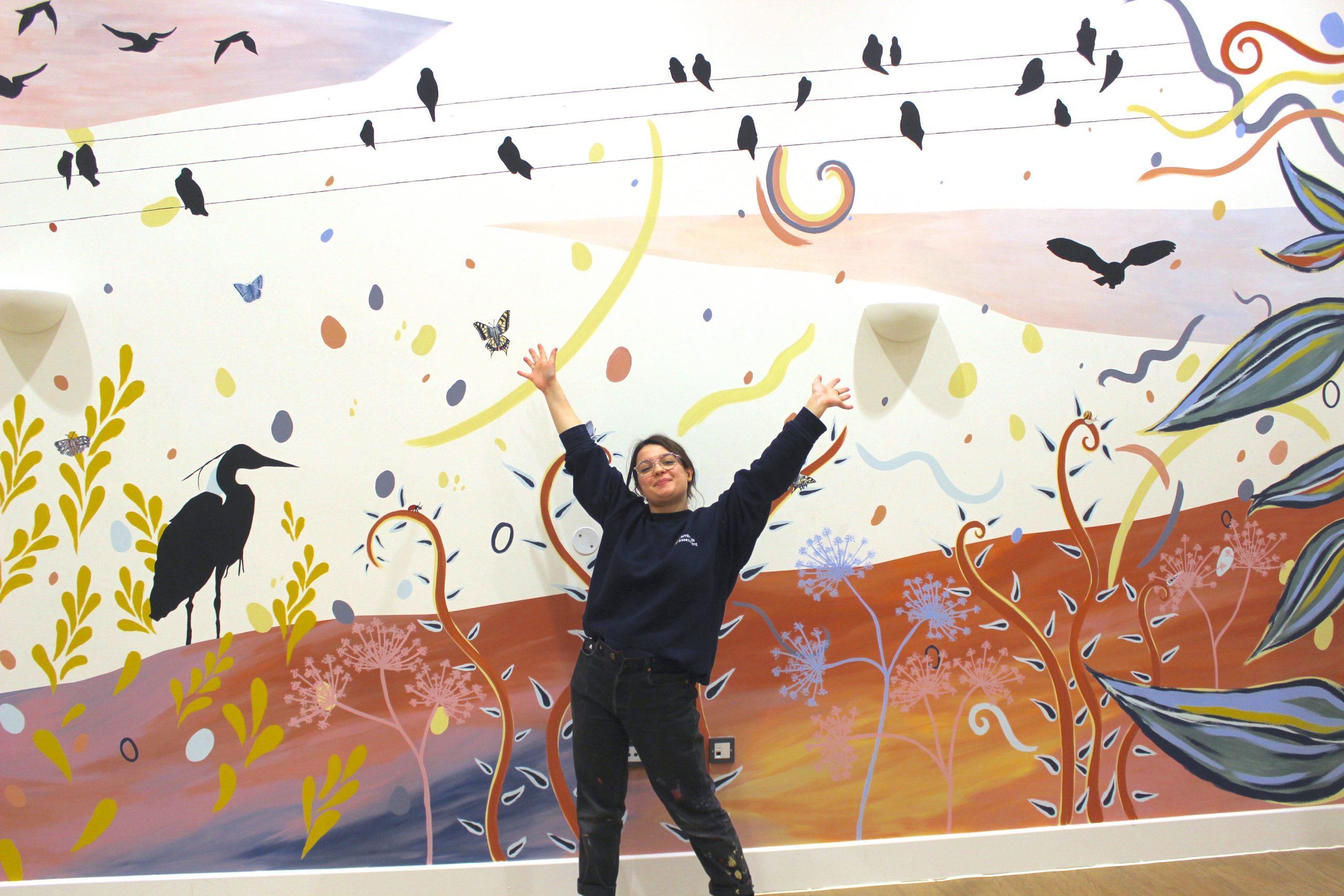

Image: Pop-up opera in association with Scottish Opera and DG Arts Festival. Partnership working with regional and national organisations such as DG Arts Festival will connect care home residents and staff to rich and diverse creative experiences.
OutPost Arts would like to extend thanks and gratitude to:
• Scottish Care, specifically Fiona Kane and Leah Kerr, for their amazing support in directing and facilitating Phase 1.
• Project Lead Officer Phoebe Watt, for her impressive leadership and dedication.
• Staff & managers at Munches Park, Fleet Valley & Allanbank homes – for their amazing support and participation.
• Care home residents - for their enthusiasm and openness in sharing their thoughts.
• Artist Leads – Julie Stephen, Lucy Lee and Paragon Music, for their creativity, their ideas, and their coordination of extremely high-quality, meaningful arts experiences.
• Session Assistants – Adult Art Journal Project graduates and Peer Mentors, Martha Schofield and Kim Bannister, for their kind support.
Links -
Scottish Care: www.scottishcare.org
OutPost Arts: www.outpostarts.co.uk | www.dgcreativewellbeing.co.uk
Munches Park: Munches Park House - Care home in Dalbeattie South West Scotland
Fleet Valley: Home - Fleet Valley Care Home
Allanbank: www.sanctuary-care.co.uk/care-homes-scotland-dumfries/allanbank-care-home-dumfries
Julie Stephen: www.facebook.com/theartfulcorner/
Lucy Lee: www.oldmillarts.com
Paragon Music: Paragon Ensemble Ltd
